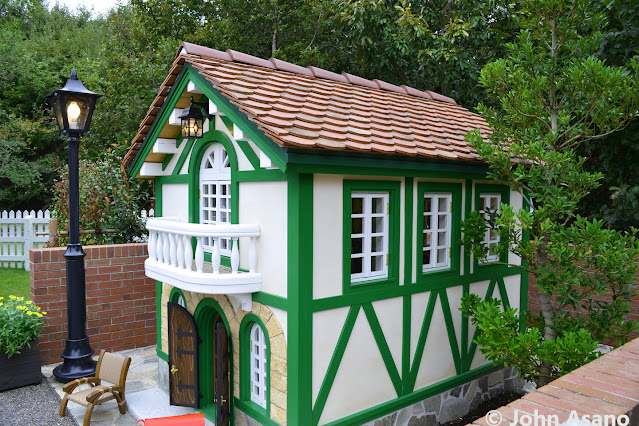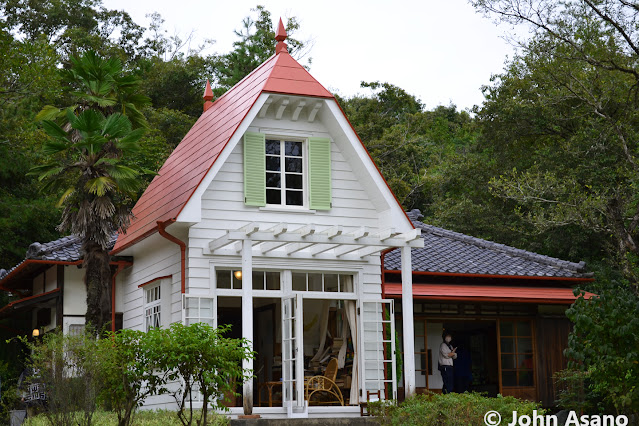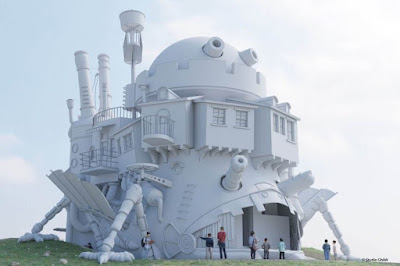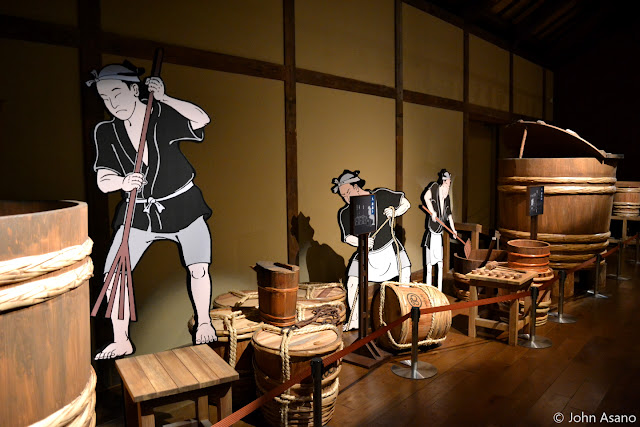Ghibli Park in Aichi
The theme park is set to open on 1 November 2022, just in time for the reopening of Japan to overseas tourists. The sprawling attraction is located at Expo Memorial Park in Nagakute, Aichi Prefecture.
The 7.1-hectare park will feature attractions from iconic
films such as Mononoke Village from Princess Mononoke, and the castle from Howl’s
Moving Castle. The experience will be enhanced with Ghibli themed cafes,
restaurants, and playgrounds.
The theme park will be divided into five different areas:
Hill of Youth, Ghibli’s Grand Warehouse, Mononoke’s Village, Valley of Witches
and Dondoko Forest.
 |
| The Entry to Ghibli Park via the Elevator Tower |
The facility will initially open with 3 areas which are the Hill of Youth, Ghibli's Grand Warehouse and Dondoko Forest. The other two areas will open in the near future with Mononoke's Village scheduled to open in 2023 and the Valley of Witches in March 2024.
The lush green park was the site of the 2005 Aichi World
Expo, so it is a perfect match for the nature of the famous flicks.
Hill of Youth
Located near the north entrance of the park, this area is modeled after the settings of "Whisper of the Heart" (1995) and "The Cat Returns" (2002). The highlight here is the recreation of the World Emporium, the antique shop from Whisper of the Heart. The attention to detail in the shop is amazing with food in the refrigerator and even trash in the garbage bin.
 |
| The World Emporium at the Hill of Youth |
 |
| The Cat Returns |
Ghibli’s Grand Warehouse
This large indoor area covering 9,600 square meters is home to
an exhibition room, a children’s playground, shops, restaurants, and a small
theatre. The idea of this area is to allow visitors to immerse themselves in the whimsical worlds of Ghibli and interact with famous scenes from the movies. You can see the Iron Giant from "Laputa: Castle in the Sky" (1986) and take a virtual train ride with Kaonashi from "Spirited Away" (2001).
 |
| Ghibli's Grand Warehouse |
 |
| The Iron Giant from Laputa |
Dondoko Forest
Dondoko Forest is dedicated to the film "My Neighbor Totoro" (1988) with a 5-meter-tall wooden Totoro that visitors can actually climb inside.
 |
| Dondoko Forest |
 |
| A five-meter-tall wooden Totoro at Dondoko Forest |
The highlight of the Dondoko Forest area is walking through Satsuki and Mei’s house from My Neighbor Totoro, which was set in a rural landscape from the Showa period (1926-1989). The attention to detail in the house is amazing with period-specific furniture and items. There are actual real items from the 1950's here including newspapers and books. Part of the fun is looking around and discovering all the small details.
 |
| Satsuki and Mei's House from My Neighbor Totoro |
 |
| Real Show Era items inside the house |
Mononoke’s Village
Mononoke’s Village will feature a real-life recreation of
Tatara-ba, the irontown depicted in the movie "Princess Mononoke" (1997). The beautiful scenery will
transport you back in time to the Muromachi period (1336-1573) of Japanese
history, where the movie is set.
 |
| Mononoke's Village (Photo: ©Studio Ghibli) |
Valley of Witches
The Valley of Witches draws inspiration from films that
feature protagonists with magic powers such as "Howl’s Moving Castle" (2004) and "Kiki’s Delivery Service" (1989).
It will be home to a real-life, 16-meter-tall replica of
Howl’s Moving Castle, including moving cannons resembling eyeballs.
 |
| Howl's Moving Castle (Photo: ©Studio Ghibli) |
Entry to the Expo Memorial Park is free but visitors will need to reserve tickets in order to enter each of the five areas.
Adult tickets for Ghibli's Grand Warehouse cost 2,000 yen on weekdays and 2,500 yen on weekends, while entry to the Hill of Youth and Dondoko Forest is 1,000 yen at all times. The fees for children are half-price.
This will be no ordinary theme park. You will not find rollercoasters or death-defying rides here, but simply a fantasy world, where you can feel part of your favourite Ghibli movie.







































